Located in the southernmost part of Central America, the Republic of Panama comprises a narrow strip of land with the sea on either side of it. Living in Panama conjures up images of white sand beaches, beautiful mountains, and bustling cities. But there’s more to Panama than meets the eye.
Beneath the gorgeous natural beauty, the country has a sound infrastructure and amenities that citizens can enjoy. From high-speed internet to reliable power and various investment opportunities, Panama offers many benefits to those who prefer a comfortable, stable life.
In the past two decades, Panama has seen unprecedented growth, attracting tourism and expats from all over the world. Expats love the country’s sense of community, security, and laid-back lifestyle. The low cost of living is also a huge bonus.
Simply calling Panama an incredible retirement destination would not do it justice. With the help of different visas and resident permits, people of all ages and stages are moving to Panama to build a new life in the sun.
In short, Panama seems to have it all! Let’s take a look at why people love living in Panama and how to make the big move.
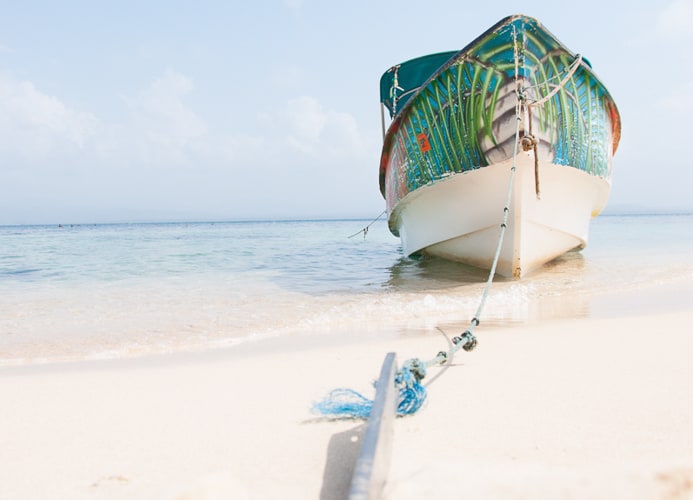
Why do people love living in Panama?
1. Panama has a low cost of living
Panama ranks 122 on the Where Can I Live Cheapest Country Index. The average cost of living is 75% vs. Germany and 60% vs. the USA.
So, living in Panama can make you feel like you’ve doubled your income, savings, or pension.
While prices vary by region and area, basic amenities like groceries, eating out, entertainment, rent, and transport cost much less than what you would pay in the US. Indeed, there are parts of Panama where you could comfortably live on $1,000 or less per month. Obviously, the cost of living in Panama City and other Expat hotspots is higher than in remote regions.
Also, the cost of labor is low, so a gardener or housekeeper could cost as little as $20/day. And, that help can free you up to do the things that you love.
Importantly, Panama uses the US dollar as its official currency, which keeps exchange rates stable and inflation within targets. Because of this, Panama is not likely to experience the hyperinflation that other countries in the region have suffered. This stability makes budgeting easy as your living costs won’t fluctuate wildly. The only exception is imported goods which are understandably more expensive in Panama.
The Republic of Panama promises a comfortable, convenient, and high quality of life on a budget.
2. Living In Panama Means Simple And Low Taxation
Income Tax Rates (including ZERO % for temporary residents living in Panama)
Panama’s income tax rates are low compared to many countries.
- If you are a permanent resident, or citizen, or earn money in Panama, your tax ranges from 5% to a maximum of 25%. The first $11,000 is tax-free.
- Certain investments (including interest on savings accounts) are tax-free for everyone, regardless of immigration status.
- For anyone on a temporary visa or residence permit, it is even better. 100% of income earned abroad is tax-free.
Yes, that’s right, the Panamanian government will not apply any tax to income you earn outside of Panama. So digital nomads, freelancers, and remote workers have a brilliant opportunity. The Panamanian government will let you keep 100% of your earnings.
Property Taxes
You can save up a lot due to lax property taxation rules in Panama. For your principal home, you don’t pay any tax on the first $120,000. After that, it is a sliding scale. For example, for a $200,000 home in Boquete, you’d only pay around $400 per year in property tax. There is also a range of tax exemptions of up to 15 years for newly built properties, further lowering living costs.
VAT (sales or consumption tax)
The standard VAT rate in Panama is 7%. Many items are exempt, including basic foodstuffs, medicine and healthcare, leased property, and education. There are higher rates for tobacco(15%), alcohol (10%), and hotels and tourist accommodation (10%).
Other benefits of Panama tax law
Panama does not tax wealth in the same way some other countries in North America and Europe do. These are some taxes that you won’t have to pay in Panama:
- Net worth/wealth taxes.
- Inheritance taxes.
- Death duties.
- Estate taxes.
- Gift taxes (except on some property owned in Panama.)
So, you get to keep much more of the money you make, inherit, or pass on to your kids. And that also helps your daily cost of living in Panama.
3. Panama City Has World-Class Health Care Facilities
Given the size of the country, Panama has an excellent healthcare system complete with international standard facilities and health benefits.
Healthcare facilities in the capital, Panama City, offer a full range of services that rival any other city in the region. There’s also an abundance of English-speaking doctors trained in the top USA and European institutions.
In fact, the Punta Pacifica Hospital in Panama City is the only Latin American hospital to be affiliated with John Hopkins University. And all this at a fraction of the cost you would pay elsewhere in the developed world. Even without health insurance, world-class medical and dental care can cost as little as 25% of the equivalent in the US.
Panama is also well-equipped when it comes to pharmacies. You won’t have any trouble finding common over-the-counter medications without prescriptions. The cost of medication is about a third of what you would pay in the US.
This quality is a result of Panama’s significant investment in its healthcare sector. The government saw this as essential, both as a service to the country, and to encourage health tourism. For that reason, the public system is continuously improving. At present, a thriving private medical system is supported by remarkably cheap health insurance ($45 – $120 per month). This system has developed in large part to service the growing expat community.
Many expats still choose private international healthcare insurance, however. It gives them the peace of mind that they can have access to medical facilities and care all over the world as well as faster access in Panama.
4. Panama Has Excellent Infrastructure
Panama has seen massive investment in a range of infrastructure projects over the last decade, which has accelerated over the previous five years. Because of this, across the country, you have access to reliable power and water, high-speed internet, cable television, and cellular phone coverage.
Communication Services in Panama
For cell phone coverage in Panama, you can purchase a local sim card for more or less $5. Data plans and talking minutes can be added according to your convenience. Cell phone reception is decent throughout most of the country, especially on the mainland.
You can also find reliable wireless internet plans for about $30 per month. The internet speed ranges from 7 Mbps to 600 Mbps depending on your chosen plan. Internet services are also available in cafes, malls, and hotspots scattered throughout the city. However, internet providers may not be so readily available in more remote and rural parts of the country.
Water and Electricity Services
Panama has a reliable electricity service along with clean tap water. The tap water available on the mainland is safe enough to drink depending on your standards.
Recreational Facilities
Apart from these basic commodities, the entertainment sector in the country is also top-notch. Panama has a wealth of golf clubs, shopping malls, restaurants, beach resorts, parks, and other recreational facilities. And, many of these are a fraction of the prices you’d pay in America, Europe, and elsewhere. Festivals, concerts, and cultural events for locals and expats alike are also in abundance in Panama City.

Transportation
There is one major International Airport in Panama City that receives air traffic from all over the world. Other smaller international airports are located in David and Rio Hato.
Apart from air travel, taxi services are readily available all across the country. The cabs run on standard fares determined by which zone of Panama City you’re in. A typical cab ride within the city can cost around $3 but there is room for negotiation. Panama also has Uber services.
Other public transportation options include buses and a metro train. The bus service can take you almost anywhere around the city and outside within the price of $3 to $20. A modern metro train connects two ends of Panama City with a one-way ticket of 35 cents.
Another interesting form of transport is found in Bocas del Toro. These are water taxi boats called pangas that you can hail like a taxi for a trip to neighboring islands. They can cost around $2 to $20 depending on the distance.
The most common forms of personal transport for locals are walking, biking, or horseback riding. However, cars are found in abundance in cities, causing massive traffic jams and bustling intersections.
The government also has a focus on improving transport options. There are three significant projects funded and underway.
- A second terminal at Tocumen airport.
- A second metro line in Panama City.
- Central America’s first high-speed train.
And, these infrastructure upgrades complement the best road network in the region.
5. Panama Is A Safe Country For Expats
The Where Can I Live Safest Countries Index ranks Panama at 49th safest country to live. This makes it the 5th Safest Country to live in Central & South America.
In general, Panama’s crime statistics have been improving steadily for several years. An increased focus on law and order to promote tourism and inbound investment has made it a much safer place.
To be sure, Panama has its problems. However, they are concentrated in some areas that suffer from drug-related gang violence. Critically, violent crime is not common outside these areas.
This view agrees with most Expats’ experiences, which are above all positive. However, there are some precautionary measures to keep in mind. That is to say, always be aware of your surroundings and situation to keep safe. However, these tips for safely living in Panama are the same as in most places in the world. Expats from the USA and Canada often feel safer in Panama than in major cities back home.
Panama’s location also keeps it safe from the worst impacts of hurricanes that form in the Caribbean. The country is outside the usual route Northwards through the Caribbean, Latin America, and the Southern USA. Because of this, a hurricane hasn’t hit the country since the highly unusual Southward traveling Hurricane Martha in 1969.
6. Panama Is A Thriving Travel Hub
Because of its geographical location, Panama is a hub for regional air travel, logistics, and shipping. Given this infrastructure, there are economical, reliable, and regular ways for you to easily travel. Even for a quick shopping trip for your favorite things to buy the things you need.
There are regular direct flights to all United States major flight hubs from Panama City or David. And, there are direct flights to Canada, Europe, Central America, and South America.
There are two international airports, Tocumen International Airport outside the capital and Enrique Malek International Airport near David.
This infrastructure makes it easy for family and friends to come and visit. And, given how amazing your life will be in Panama, you may have a lot of visitors.
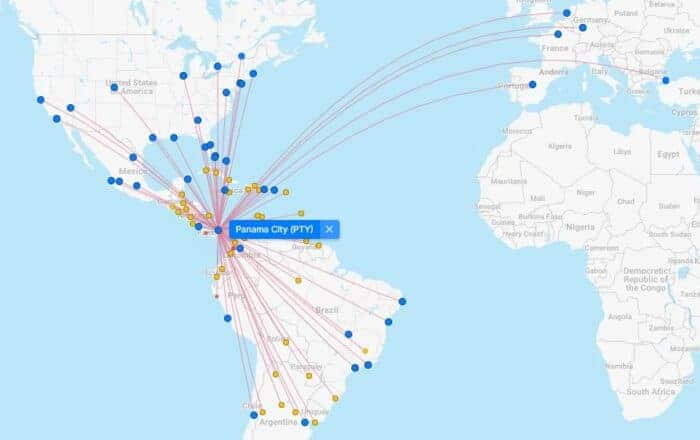
And, the famous Panama Canal means that yachts, ships, and boats pass through the country on their way between the Atlantic and Pacific oceans.
7. Living In Panama Means A Wonderful Climate And Diverse Natural Beauty
Natural Beauty in Panama
To illustrate the diversity of the country, checkout 3,475 m Volcán Barú. From the peak, you can famously see the sunrise over the Caribbean and sunset over the Pacific from the same place! This trick is possible because a mountain range spine separates Panama’s two beautiful coastlines.
There are massive areas of unspoiled natural beauty, from the rain forests of the North to the tropical islands dotted along the coasts. Because of that, fishing, walking, birdwatching, scuba diving, cycling, sailing, boating, and much more are all activities that are available to the adventurous. What’s more, all this is within a country where you can drive from top to bottom in around 8 hours!
Panama has done a great job of protecting its natural resources. Fully 25% of the country is protected as part of the network of national and marine parks. Only Honduras and Guatemala have similar amounts in the region. From the UNESCO recognized Coiba National Park to the Altos de Campana, parks in Panama will inspire you.
Climate and Temperature
Common Expat favorites include Panama City, Coronado, El Valle, David, Boquete, and Bocas del Toro. Their wide range of climates covers the preferences of most people.
What’s more, you can pick your ideal temperature to live in based on the elevation in a particular region. In sea-level cities, you’ll find that temperatures range from 85 to 90 degrees Fahrenheit. For every 1,000 feet increase in elevation, the temperature drops by 4 degrees Fahrenheit.
Panama’s Two Pleasant Seasons
- The dry season is from December / January to May / June
- The rainy season is from May / June to December / January. Remember, the month of November can be very wet!
The rainy season is cooler than the dry, but humidity can be higher. All through the year, you can get cooling sea breezes.
In conclusion, year-round warm weather, and sunshine, with a refreshing mountain cool down just a short drive away, is on offer. Obviously, the best place to live in Panama depends on which climate, population center, and geography suit you best.
8. There’s Something for Everyone in Panama
The rapidly evolving tourism industry of Panama has also given rise to tourist attractions all over the country. While Panama City offers world-class recreational facilities, adventurous tourists may also prefer to venture into the interior regions for a taste of some local culture and natural vistas.
Here are a few of the most famous attractions in Panama:
- The Panama Canal – Better known as one of the top 10 man-made wonders of the world, the Panama Canal is a world-famous destination and a truly wondrous sight to behold.
- Indigenous Tours – Delve into the colorful culture of remote regions in Panama by visiting villages in the Darien jungle or embarking on a tour of the Embera’ village.
- Diving and Snorkeling – Visit Marine Parks in Isla Coiba or Bastimentos in Bocas del Toro for an unforgettable diving and snorkeling experience.
- Whale and Dolphin Watching – Between July and October, countless tourists sign up for whale and dolphin watching tours that are fast becoming one of the top tourist attractions.
- Bird Watching – With over 900 species of birds, Panama is heaven for bird watchers all over the world.
- Hiking and Extreme Sports – Residents and tourists have many hiking trails to choose from. Extreme sports like zip-lining rides through the jungle are also available in areas like El Valle, Darien, and Bocas del Toro.
Apart from these few activities, there are countless other attractions such as surfing, deep-sea fishing, golfing, and community work that tourists and residents can engage in.
9. Panamanian People, Food, And Culture
Panama has long been a hub of international business. This has made the locals more accepting and welcoming toward expats. Unlike in other developing countries, expats are likely to find little to no pushback from the locals of Panama.
Language
The official language of Panama may be Spanish but English is considered the international language of business. Most locals in Panama are fluent in English, native Spanish, and other European languages, making it easier to communicate and forge connections with them. English is more prevalent in areas with a high percentage of expat populations like Boquete and Coronado.
Since the native tongue is Spanish, you will find fewer English speakers in the rural towns of Panama. For example, locals in Bocas del Toro speak a mix of Spanish, English, and Caribbean Creole. If you’re planning to relocate to Panama, some understanding of the local languages, especially Spanish, can come in handy.
Food
Many restaurants offer American-style food through international franchises and restaurants. But, don’t miss out on the sumptuous local cuisine, influenced by Spanish, Caribbean, African, American, and Indigenous cultures.
Cultural Norms
Be aware that the pace of life here is a double-edged sword for those moving to Panama. While living in Panama’s less pressured environment is brilliant, it can have a downside. Things sometimes happen more slowly here, and if you are in a rush, it can be frustrating. Booking an appointment doesn’t always mean that the meeting is set in stone. Dealing with red tape and bureaucracy can take some patience and some help to get things done right.
10. Panama Has High-Quality Private Schools for Expats
There is a range of International School choices for Expats, with American, British, French, and German options. These range from preschool to A-Level and International Baccalaureate Diploma. The International Schools in Panama are considered among the best schools in Central America. Most such private schools are located in regions with high expat populations such as Panama City, Coronado, and Boquete.
The admission fee for private schooling in Panama can range from $500 to $4,000 and family discounts are available. The school year can vary. All local schools follow the standard of February to December, and many international schools are the same. However, some international schools may run from September to June as per the American and European school calendars. There are 88 tertiary education providers in Panama, including the University of Panama, and the Technological University of Panama. The most popular schools accept international and local students.
How to move to Panama
Now that Panama has won your heart and you’re ready to make the big move, follow the steps below to set up a new life in Panama!
Get a Residency Visa or Permit
The first step is working out how to live legally in Panama. The excellent news is that Panama has highly accommodating residency permits and visa options.
The most famous is Panama’s Friendly Nations Visa. You could qualify for immediate permanent residency and a work permit. We’ve written a complete guide to the Friendly Nations visa, including how to apply and all fees and costs.
But, other visas include:
- A dedicated Panama retirement visa
- A student visa (both for University and short-term student programs)
- Several investor visa options.
Check out our Panama Visa and Residence Permit Guide for more details.
To understand which visa is the best option for you, we recommend booking a consultation with our recommended Panama immigration lawyers. They can assess your personal situation, and advise on the best visa and next steps.
Pick a Location to Live in Panama
Picking the right location to build your new life in is a crucial part of relocation. From bustling cities to serene rural towns, Panama has a lot to offer.
Here are some of the most famous Panamanian cities that expats love to settle in:
- Panama City – For expats who love fast-paced city life, Panama City is the place to be. As the biggest city in the country, it has the largest variety of international events, outlets, and amenities. Some popular expat hubs in the city include El Congrejo and Casco Viejo. Due to the multicultural nature of Panama City, foreigners have an easier time settling in with close to no culture shock.
- Coronado – Playa Coronado consists of beautiful beaches on the pacific coast housing the second largest expat population. It is a quaint gated community beside the beach with activities like golfing, swimming and surfing to keep you satisfied.
- Boquete – Housing the largest expat community in Panama, Boquete is a popular choice for foreigners, especially retirees. It’s a little mountain town that provides a quiet lifestyle but property prices have skyrocketed in recent years. The nearby city of David gives residents access to hospitals, schools, and shopping malls.
- David – David is the third-largest city in Panama and has all the charms of big city life. From international fast-food chains to clothing brands and the best medical facilities, you’ll find just about everything in David.
- El Valle – The charming city of El Valle de Anton sits at a high elevation with a pleasant climate all year round. Nature enthusiasts will surely fall in love with the natural beauty, exotic wildlife, and sceneries El Valle has to offer. There is a shortage of private schools and hospitals in the area as it mainly serves as a luxurious resort setting.
- Bocas del Toro – With a laid-back, chill vibe and Caribbean influences, the isolated town of Bocas is one of the most unique cities in the country. Bocas is primarily a water town and people commute through boats called pangas.
Find Work Opportunities in Panama
Not everyone in Panama arrives with a sizable pension or retirement fund to live comfortably forever. Before you relocate to Panama, it’s important to search for job opportunities and secure a position in advance to supplement your income.
Whether you want to finance your life or fulfill your ambitious drive, there are many emerging work opportunities to explore in Panama. You just have to get a bit creative!
- Expats on a retirement visa are not allowed to get a work permit or employment in the country. This means you can’t start your own business either. The workaround is to hire Panamanians with work permits to sell your products.
- Other visas may give you the option to work in Panama but job opportunities are scarce for foreigners.
- There are a few caveats to working in Panama: the minimum wage is as low as $2.40 per hour, skilled labor is difficult to come by, and there’s a lot of competition.
- Apart from special written governmental consent, foreigners can only occupy 10% of jobs in local companies. However, jobs are readily available for foreigners in multinational companies.
- As it is the native language, Spanish skills are a basic requirement of most jobs in the country. If you’re fluent in English, you may consider taking up English teaching jobs.
- Starting your own entrepreneurship venture is another innovative way of creating opportunities and meeting the needs of your community. Retirees and young people alike can set up online businesses based in their home countries.
Search for Rentals and Real Estate in Panama
Finding rental properties or real estate is an important step in the moving process. Fortunately, Panama is very accommodating in terms of real estate ownership. The country allows anyone, even tourists to purchase real estate. The only challenge is to find the right property at a good price.
Real Estate Trends in Panama
Due to the lack of a fully-functioning real estate service, finding and comparing property prices and sales can be challenging. Since one real estate company may not list all properties available in the area, it’s better to contact multiple realtors before making a final choice.
Online listings and classified sections can also prove to be valuable resources. Another handy tip is to scout the neighborhoods you’re interested in and talk to locals. Many property and real estate opportunities in Panama can be discovered through word of mouth alone.
Forms of Property Ownership
The two main types of property ownership in Panama are:
- Titled Property – This is the more secure and preferable option as it comes with a deed and a Finca number.
- Right of Possession – This means you’re purchasing the right to use the property but the actual ownership technically lies with the government.
Before you buy a property, make sure to go through the proper legal channels by hiring an attorney who can perform a title search and paperwork on your behalf.
Real Estate Prices
Panama’s property prices are arbitrary at best. Locals often believe that expats have more money to spare and usually quote higher prices to foreigners as compared to other locals. Areas with a higher expat population usually see a rise in property prices. But you can find some promising deals in undiscovered rural localities.
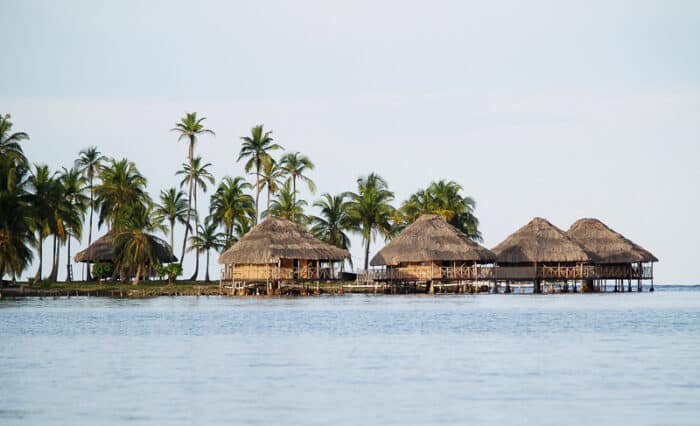
FAQ
How to Move to Panama?
Here’s what you have to do to move to Panama:
- Apply For A Visa/Permit
- Pick the best place to live in Panama
- Search for job opportunities and secure a position
- Find a rental or buy property
What’s It Like to Live in Panama?
Living in Panama can be a dream come true for expats. The low cost of living, amazing weather, accommodating residency laws, and welcoming locals make Panama one of the best locations for expats looking for a comfortable life.
Is Panama Safe to Live?
The US State Department ranks Panama as a Level-1 country, which is the safest to visit. Expats from the USA and Canada often feel safer in Panama than in major cities back home. Panama’s location also keeps it safe from the worst impacts of hurricanes that form in the Caribbean.
Is Panama a Good Place to Live?
Panama is an excellent place to live if you’re looking for a comfortable, convenient, and exciting lifestyle on a budget. For many expats, Panama provides the kind of lifestyle they can only dream of achieving in their home countries at a fraction of the cost. Retirees looking for an escape are especially attracted to Panama but people of all ages can find a warm and welcoming home there.
What’s It Like to Retire in Panama?
Panama has become one of the top retirement havens in the world. Not only does the Panamanian lifestyle favor retirees, but the country also takes care of the older population. People over the retirement age get several perks including traveling, healthcare, and recreational discounts. The best places to retire in Panama include Coronado, Panama City, David, and Boquete.
Living in Panama can be the dream Expat life
These are just some reasons that Expats rank Panama life as an incredible experience. And, the country has something for everyone, from school kids to retirees.
The warm Latin American welcome extends far beyond the Expat book cover, which is why the country has become a home for many. The opportunity to join them awaits you and your family living in Panama.
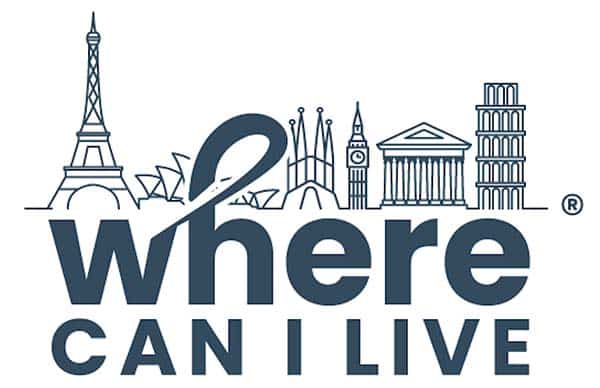

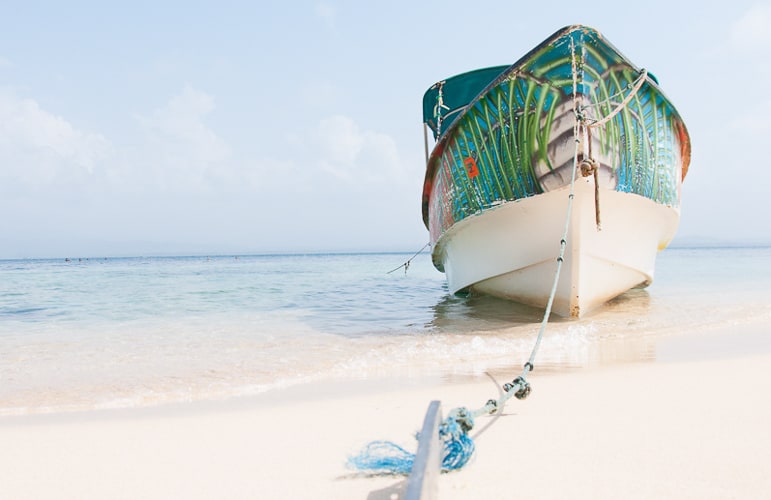






Very helpful and enlightening
I need to talk to someone about mogration to Panama.
Hi Jelugbo – please book a consultaiotn with our Panama Immigration lawyer partner here.
All the best, Alastair
I would like to move to Panama Bouquete . Please advise
Hi Lilowtie. The first thing to do is sort out your Panamanian visa or residency permit. OUr expert Panama immigraiotn lawyer will be happy to help you with this process. All the best, Alastair
RE: Retirement VISA, does being an author who sells all books online only constitute “working” in relation to this VISA? Beginning to explore this potential move and I’m wondering which VISA is right for me.
Hi Frank, Our excellent partner Panama Immigration Lawyer will be happy to help you find the best visa. Please book a consultation here. All the best, Alastair
Hello!
Wondering if you could recommend a smaller community in Panama where folks ride horses as transportation, where a single mother of two young girls could live/move that is not over ran with expats? Would love some recommendations.. thank you -Nicole